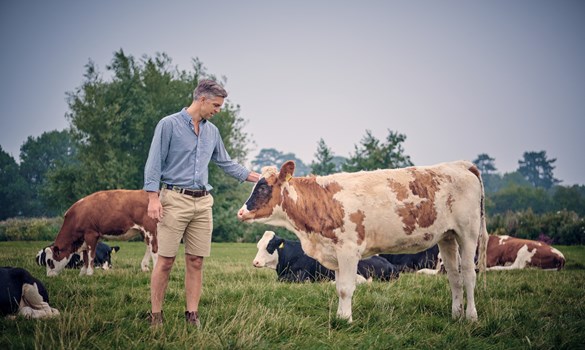Transition management in autumn calving herds
Join us on this webinar to learn how to ensure a smooth transition management in an autumn block calving herd, and how to better use data to make informed business decisions.
Hefin Richards of Rumination Nutrition Consultancy will work through the principles of transition success, both generally and specifically with block calvers. You’ll learn about the impact of the sheer number of calvings, and potential pressures on facilities and staffing.
You will also hear from Phil Kinch from Buscot Wick Farm, an autumn block calving herd based in Oxfordshire, about the challenges he has faced. You will learn about the benefits of being able to focus on transition for a relatively short period, get geared up for it in terms of forage and feed and focus on the task in hand.
In this webinar you will learn:
- About the challenges faced by Buscot Wick Farm
- The impact of heat stress on transition success
- The challenge of managing block calving systems at grass with large groups, variable yields and post dry off period
- How to assess transition success
About Buscot Wick
Buscot Farm has been in the Kinch family for 80 years and is managed by Phil Kinch in partnership with his wife and parents. The farm's dairy production activities are closely managed by Herd Manager Shane MacNamee, who operates extremely tight control over their autumn block calving herd of cross-bred cows.
Based on the Oxfordshire-Gloucestershire border, just off the M4 near Swindon, the farm consists of 1,400 hectares - a fifth of which is committed to dairy, including a 67-hectare grazing platform, with the remainder given over to arable. It has been a Strategic Dairy Farm since May 2018.
The herd is currently made up of 360 autumn calving and 80 spring calving cows, with an increasing number of Norwegian Red and Fleckvieh cross, achieving 8,500 litres of milk per cow per year with 4.3% butterfat and 3.47% protein mix, milking twice per day. They graze from March through to October and generate 120-150 home-reared heifers annually with an average age at first calving of 24 months.
The farm has increased its resilience by reducing the amount of bought-in feed, all the forage required is grown by the business and half of the concentrate in the form of crimped maize. Farming on a flood plain that can drought out very quickly means there is always a keen focus on home grown forages and high utilisation rates.
Staff are the most important part of the farm and the team have a tremendous, supportive attitude to each other, helping to keep the farm policy on track and everyone understanding their part of the success.
Learn more about Buscot Wick Farm
About Strategic Dairy Farms
Strategic dairy farms help farmers learn from each other through regular on-farm meetings where we will share key performance data and showcase what the best farmers are doing.
They form part of the Optimal Dairy Systems programme which aims to help dairy farmers lower costs and increase efficiency by focusing on either a block or all-year-round calving system.
The growing network of strategic dairy farms have calculated key performance indicators (KPIs) for their enterprises which are shared at meetings and published online. These are physical and financial performance measures that are critical to success. Farmers can benchmark their businesses against these KPIs and identify areas for improvement.


